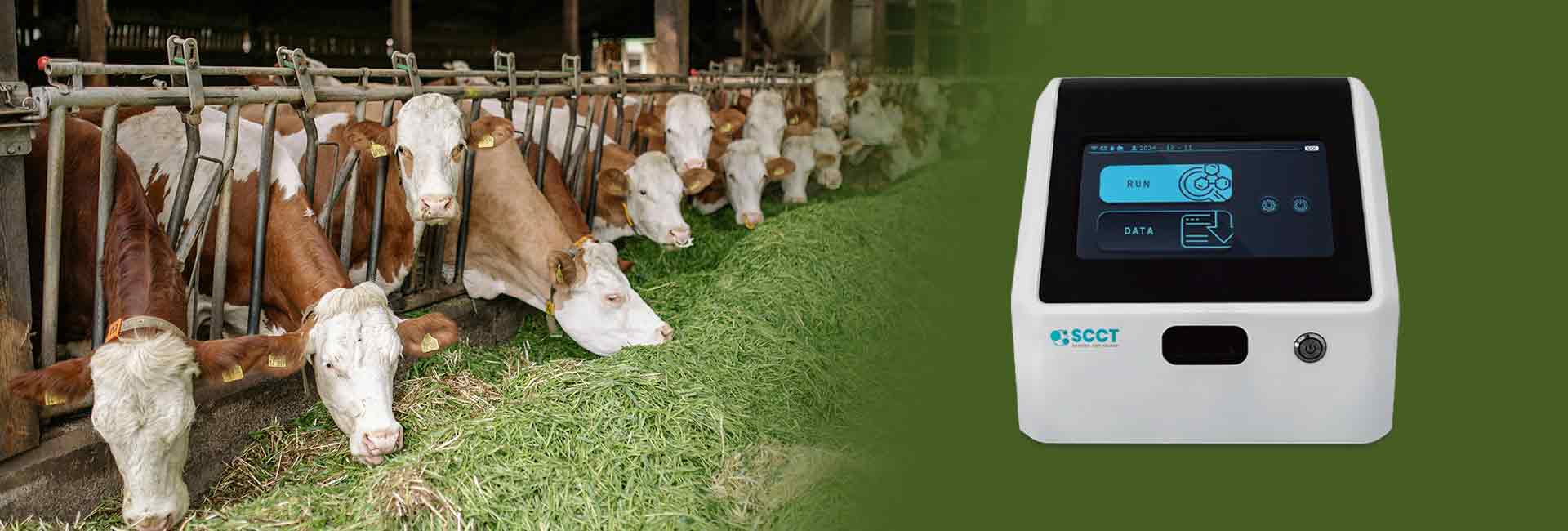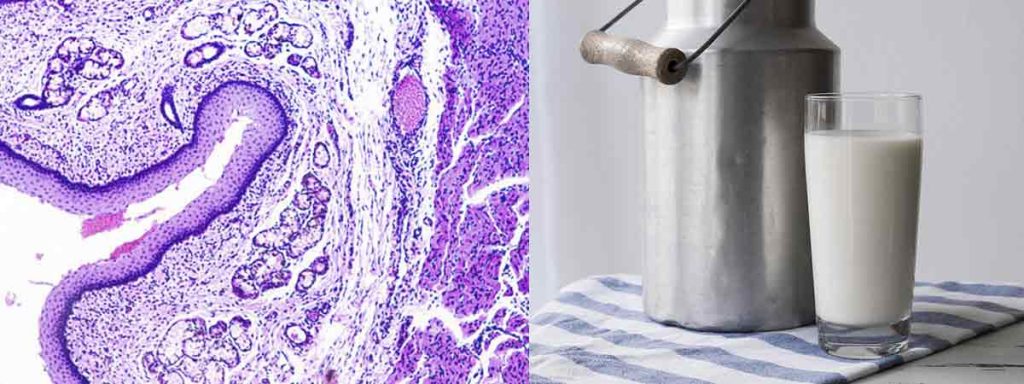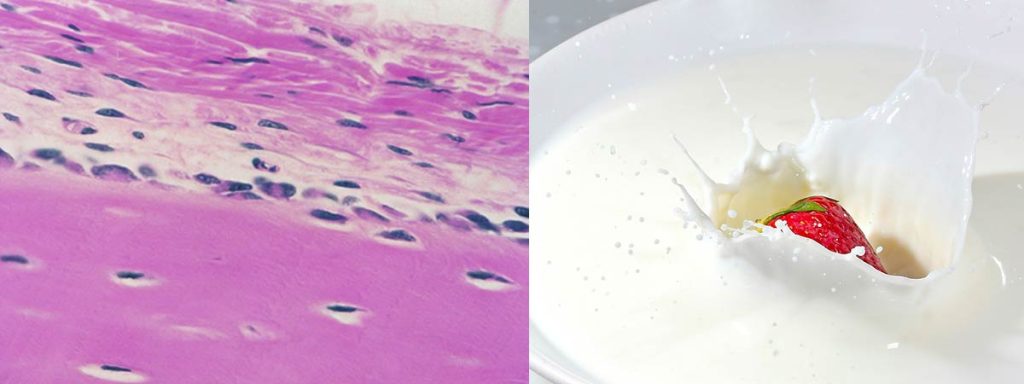

To calculate somatic cell count in milk, a person collects a milk sample, prepares it using standard protocols, and measures the cells with a somatic cell count tester or automated analyzer. Somatic cell count serves as a key indicator of udder health and milk quality in the dairy industry. Scientific studies show that most somatic cells in milk are immune cells, which help protect the udder but can signal inflammation when present in high numbers. Accurate SCC measurement benefits dairy farmers, as it helps maintain herd health and ensures high-quality milk for consumers. The following table shows recent average SCC levels in raw milk across different regions:
| Statistic | Value |
|---|---|
| Average SCC in U.S. dairy herds (2020) | 178,000 cells/mL |
| U.S. legal limit for bulk tank SCC | 750,000 cells/mL |
| Percentage of herds exceeding 400,000 cells/mL | >8% |
Key Takeaways
- Collect milk samples carefully using clean tools and cool them quickly to keep results accurate.
- Use reliable tools like somatic cell count tester or automated analyzer for fast and precise SCC measurement.
- Regularly check somatic cell count score to spot udder infections early, improve milk quality, and protect herd health.
- Follow strict sample preparation and testing steps to avoid errors and get trustworthy results.
- Train dairy staff well and use best practices to keep SCC low and maintain high-quality milk.
Data & Tools
Milk Sample Collection
Accurate somatic cell count in milk starts with proper sample collection. Dairy workers collect milk samples from individual cows or bulk tanks, following strict hygiene protocols. They use sterile containers to avoid contamination. The sample volume usually ranges from 10 to 50 milliliters. Proper labeling and immediate cooling help preserve the integrity of the milk. Reliable data collection ensures that the SCC results reflect the true udder health of the dairy herd.
Somatic Cell Count Tester
A somatic cell count tester is essential for measuring SCC in milk by using somatic cell count test kit. Dairy farms often use portable testers like the DeLaval Cell Counter or on-farm kits such as the Porta SCC Milk Test. These devices provide quick results, allowing dairy managers to make timely decisions. Laboratory-based analyzers, such as the Fossomatic FC, use flow cytometry for high accuracy and throughput. The table below compares common SCC measurement tools:
| Tool | Agreement (%) | Sensitivity (%) | Specificity (%) | Correlation Coefficient (r) | Notes |
|---|---|---|---|---|---|
| California Mastitis Test (CMT) | 83.1 | 81.0 | Lower (higher false positives) | N/A | High sensitivity and agreement; rapid farm test; higher false positive rate |
| DeLaval Cell Counter (DCC) | 80.3 | 75.8 | 97.5 | 0.917 | High specificity; good correlation with Fossomatic FC; portable; less accurate at very high SCC levels |
| Porta SCC Milk Test | 80.6 | 79.4 | 90.7 | 0.859 | Good correlation and agreement; useful for on-farm testing; colorimetric test with digital reader |
| Fossomatic FC (FSCC) | Gold standard | N/A | N/A | N/A | Laboratory gold standard for SCC measurement |
Automated & Manual Methods
Dairy operations can choose between manual and automated methods for SCC measurement. Manual methods, such as direct microscopic counting, require staining and visual examination of milk samples. These methods are time-consuming and prone to human error. Automated analyzers, like the Fossomatic DC and QScout Farm Lab, use advanced technologies such as flow cytometry and image analysis. These systems deliver faster, more precise, and reproducible results. Studies confirm that automated methods outperform manual counting in accuracy, reliability, and throughput. On-farm SCC tests, such as the California Mastitis Test and PortaSCC Quick, offer affordable and rapid results, supporting immediate management decisions. Laboratory-based methods, while more expensive, provide the highest accuracy and are ideal for large dairy operations.
Note: Technological advancements, including portable SCC counters and smartphone-based analyzers, have made SCC testing more accessible and efficient for dairy producers.
Calculation Steps
Preparing Samples

Accurate somatic cell count begins with careful sample preparation. Dairy workers collect milk samples aseptically to avoid contamination, which can affect results. They clean each teat thoroughly with alcohol wipes and discard the first streams of milk, as these often contain bacteria from the teat canal and surface. Only after this step do they collect 10 to 15 mL of milk into sterile containers. Trained personnel follow strict protocols to ensure the reliability of the data.
Samples must be cooled immediately after collection. Refrigeration at 4°C preserves the integrity of the milk and maintains stable scc values. If analysis cannot occur right away, samples remain refrigerated and may include preservatives like bronopol. This approach prevents degradation and ensures that the somatic cell count reflects the true udder health of the dairy herd. In large-scale dairy operations, samples are transported in cooler bags with cold packs to the laboratory. Proper labeling and handling reduce the risk of mix-ups and maintain sample quality.
Tip: Always use aseptic techniques and discard the initial milk streams to minimize contamination. Contaminated samples can lead to inaccurate SCC results and may be excluded from analysis.
Measuring SCC
Dairy laboratories and farms use several methods to measure scc in milk. The choice of method depends on available equipment, the number of samples, and the required accuracy. The most common tools include the somatic cell count tester, automated analyzers, and manual microscopic counting.
Manual Method:
- Stain the milk sample using a dye such as Wright’s stain to make somatic cells visible.
- Mix the stained sample thoroughly to distribute cells evenly.
- Place a small amount of the sample on a microscope slide or inject it into a microfluidic chip.
- Use a microscope to capture images of the cells.
- Count the somatic cells in each image manually. Take multiple images and calculate the average cell count per group.
- Determine the volume of milk in the field of view to convert the count to cells per milliliter.
Automated Method:
- Prepare and stain the milk sample as described above.
- Use a somatic cell count tester or automated analyzer, such as the Fossomatic FC, which uses flow cytometry or image analysis.
- The device processes the sample and provides a direct reading of scc per milliliter.
- Automated systems analyze multiple images and use algorithms to identify and count somatic cells, reducing human error.
Both methods require calibration and quality control. Automated analyzers offer higher throughput and consistency, making them ideal for large dairy herds. On-farm somatic cell count testers provide rapid results, supporting immediate management decisions.
Calculating Milk Somatic Cell Count
After measuring, dairy professionals calculate the final somatic cell count using the raw data and any dilution factors. For example, if the milk sample was diluted 1:400 and 0.5 mL was analyzed, the raw count is multiplied by 800 to obtain the scc per milliliter. This calculation follows international standards and ensures comparability across dairy operations.
For composite milk somatic cell count, which combines samples from all quarters of a cow, the same calculation applies. This approach gives an overall picture of udder health and helps identify cows with subclinical mastitis.
In some cases, dairy scientists use the somatic cell score (SCS) instead of raw scc. The SCS formula is:
SCS = log2(SCC/100,000) + 3
This transformation normalizes the distribution of scc data, making it more suitable for genetic evaluations and breeding programs. Dairy breeders use SCS to select cows with better mastitis resistance, as it adjusts for factors like lactation stage, age, and season. The average SCS for Holsteins is about 3.1, and lower scores indicate better udder health.
Note: Use SCS in genetic evaluations and breeding programs to improve mastitis resistance while maintaining milk yield.
Dairy farms that monitor scc regularly can detect udder infections early, improve milk quality, and reduce economic losses. Accurate calculation of milk somatic cell count supports better herd management and ensures compliance with industry standards.
Results
Interpreting SCC
Dairy professionals interpret SCC results to assess udder health and milk quality. The somatic cell count in milk provides a reliable indicator of mastitis and inflammation. Healthy cows usually have scc values below 270,000 cells per milliliter. When scc rises above 200,000 cells per milliliter, the risk of infection increases. Regulatory agencies set a maximum limit of 750,000 cells per milliliter for cow milk in the United States. Exceeding this threshold signals poor milk quality and potential udder disease. The table below shows typical scc ranges for different health conditions:
| Condition | Typical Somatic Cell Count (×10⁵ cells/ml) |
|---|---|
| Healthy cows | 2.55 (2.32–2.78) |
| Subclinical mastitis | 5.97 (5.69–6.25) |
| Clinical mastitis | 12.19 (11.63–12.75) |
Dairy herds with low somatic cell count maintain better udder health and higher milk quality. Somatic cell count tester helps producers monitor these values and respond quickly to changes.
Milk Quality Impact
SCC directly affects milk quality and its suitability for processing. High SCC signals udder infections, which reduce milk yield and alter its composition. Milk with elevated SCC has lower stability, shorter shelf life, and less desirable taste. Processors may reject milk with high scc or use it only for products with lower quality standards. In cheese production, high scc changes coagulation and texture, leading to lower quality cheese. Factors such as infection, lactation stage, and animal species influence scc and, in turn, milk quality. The dairy industry relies on regular scc monitoring to ensure safe and high-quality products.
- High SCC leads to:
- Reduced milk yield and production loss
- Lower sensory acceptance and shelf life
- Decreased suitability for fluid milk and cheese
Economic Effects
Elevated SCC causes significant economic challenges for dairy farmers. High SCC increases the risk of production loss, as milk yield drops and processors may reject or downgrade milk. Farmers face financial penalties or lose bonuses in payment programs when scc exceeds set limits. Chronic mastitis, reflected by persistent high SCC, raises veterinary costs and leads to more discarded milk. Herds with high SCC experience lower reproductive efficiency and higher replacement costs. Maintaining low SCC allows access to premium markets and improves profitability. Regular use of a somatic cell count tester supports early detection and reduces long-term losses.
Dairy farms that control SCC protect herd health, reduce production loss, and secure better economic returns.
Tips
Avoiding Errors
Dairy professionals can reduce errors in somatic cell count testing by following strict protocols. Proper sample handling remains essential. Workers should store raw milk samples at 2-6°C and add boric acid if testing will be delayed beyond six hours. Storage should not exceed 24 hours. Before testing, heating the milk sample in a 35°C water bath for five minutes helps prevent fat interference. Mixing and cooling the sample to room temperature ensures even distribution of somatic cells.
Clean glass slides with ethanol, dry them with lens paper, and flame them before use. When using a microscope, count only somatic cells that are fully or more than half visible in the field of view. Counting at least 400 cells per slide increases accuracy. Using a somatic cell count tester or automated analyzer reduces human error and improves consistency. Dairy staff should recognize the limitations of indirect methods like the California Mastitis Test and consider direct methods such as flow cytometry for higher accuracy.
Consistent sample preparation and careful use of equipment help dairy workers avoid common mistakes in somatic cell count measurement.
Best Practices
Industry experts recommend several best practices for accurate results in dairy operations:
- Prepare reagents such as ethanol, tetrachloroethane, methylene blue, glacial acetic acid, and boric acid with precise mixing and storage.
- Use microinjection to apply 0.01 ml of milk evenly on slides, then stain with methylene blue for ten minutes.
- Wash and dry slides while protecting them from dust.
- Use a microscope with X500 or X1000 magnification, a graduated eyepiece, and a mechanical stage.
- Employ natural or electric light sources with condenser and oil immersion lenses for better visibility.
Dairy farms should train staff using herd-specific Standard Operating Procedures. Structured training sessions, developed with employee involvement, lead to better adherence to milking protocols. Educated employees trained with SOPs show lower infection risks and improved somatic cell count results. Training should focus on proper milking procedures, including how to screen cows with clinical mastitis. Making training materials available in languages understood by all staff increases effectiveness.
Regular training and adherence to best practices help dairy farms maintain low somatic cell count and high-quality milk.
Conclusion

Calculating somatic cell count involves careful sample collection, precise measurement, and accurate calculation. Using reliable tools such as a somatic cell count tester ensures dependable results. Regular SCC monitoring helps dairy farmers detect udder infections early, reduce chronic problems, and improve herd longevity. Experts recommend monthly or even daily testing for better control. Organizations like the National Mastitis Council and university extensions offer valuable guidance on SCC management and milk quality improvement.
FAQ
What Is A Somatic Cell Count Tester?
A somatic cell count tester is a device that measures the number of somatic cells in milk. Dairy workers use it to check udder health and milk quality. Portable testers and laboratory analyzers both provide accurate results.
Why Does Somatic Cell Count Matter In Milk?
Somatic cell count shows the health of a cow’s udder. High counts often mean infection or mastitis. Milk with low somatic cell count usually has better quality and longer shelf life.
How Often Should Dairy Farms Use A Somatic Cell Count Tester?
Dairy farms should use a somatic cell count tester at least once a month. Regular testing helps detect problems early and keeps milk quality high.
Can High Somatic Cell Count Affect Milk Processing?
Yes. High somatic cell count can lower milk yield and change milk composition. Processors may reject milk with high counts or pay less for it.
Are Manual Or Automated Somatic Cell Count Testers Better?
Automated somatic cell count testers give faster and more accurate results. Manual methods cost less but take more time and may have more errors.
